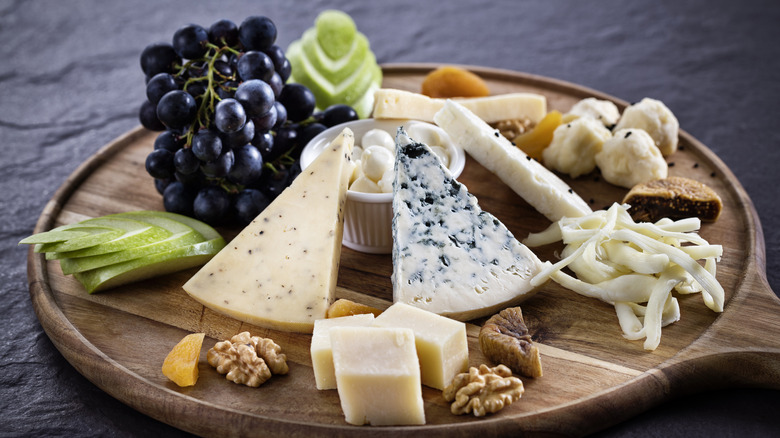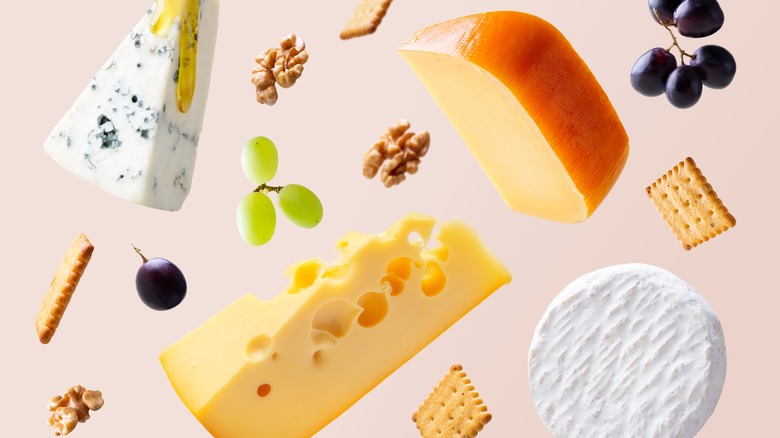Avoid The Most Common Cheeseboard Mistake By Narrowing Your Selections
A well-crafted cheeseboard is a fantastic tool to elevate any meal or gathering of friends. With so many cheeses available at the grocery these days, it can be tempting to go all-out and build a board overflowing with every type you can find. While this is a great way to sample new flavors, it's generally a mistake to do so if you're trying to make a balanced and easily-navigated cheeseboard. Let's explore why that is and how to master a better approach.
There are two main reasons to avoid the mistake of putting too many cheeses on a cheeseboard. The first is choice paralysis. Studies have shown that when people are presented with an overwhelming amount of options, it actually causes them to become fatigued and distressed rather than delighted. This leads to a decrease in satisfaction about whatever choice one ends up making and creates a less pleasant experience — not at all a feeling you want associated with your appetizers. The second reason has purely to do with the fact that, given enough options, you will start to have a display that is impossible to make pairings for, simply due to the wide variety of flavors present. Fig jam may go with your favorite Gouda, but not so much with an extra-spicy cheddar, and so having too many cheeses increases the risk of clashing flavors. In general, it's best to stick to about three or four cheeses on a board at any one time.
Choose cheeses that work together
With a board that is limited to just three or four options, it becomes important to choose wisely. While you don't want every single cheese to taste the same, you do want cheeses that complement one another. This way, they are more likely to pair well with any accoutrement you add to the board and thereby maximize the delicious combinations available to those eating it. Ideally, one should be able to pick up any fruit, nut, vegetable, or meat on the board and easily enjoy it with any of the available cheeses.
One easy way to make your selections while still getting a nice variety is to use the accoutrement as a starting point. Creamy cheeses pair with high-acidity foods, so a board that showcases tangy fruits, pickled vegetables, and honey invites pairings of goat cheese, blue cheese, or Brie. Fruit and honey also pair well with salty cheeses like parmesan and cheddar, as these benefit from the balancing sweetness. Thanks to this overlap, all of these cheeses could work together on a single board. It may seem intimidating, but rest assured this is more of an art than it is a science — get creative, play around, and you will soon find the three or four cheeses that make up your own signature assortment.

